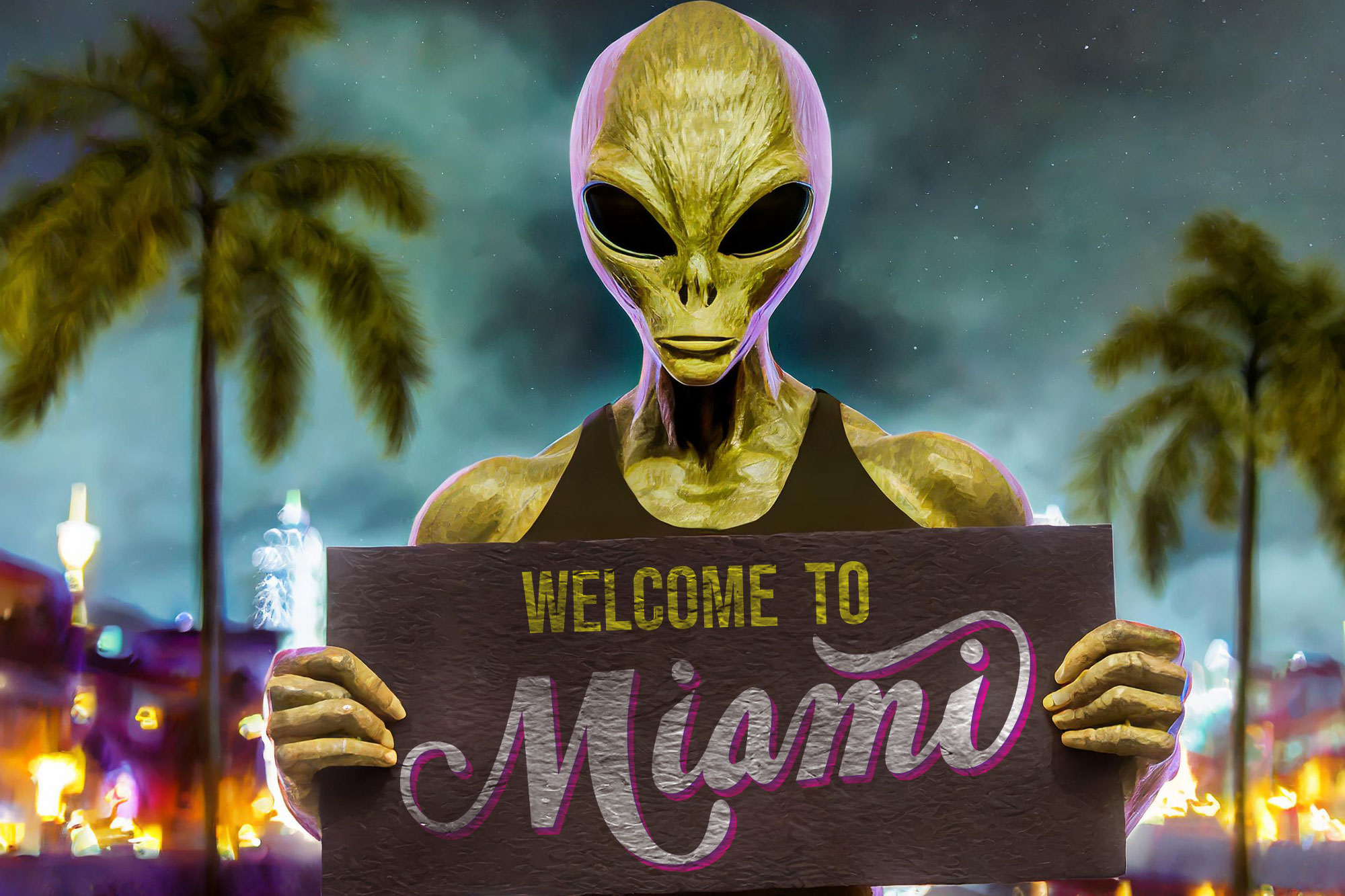Why the world is in the midst of UFO hysteria

Remember the alien invasion of Miami on New Year’s Day? A video clip posted online purported to show a 10-foot-tall extraterrestrial lurking outside a shopping mall as a massive police action was taking place.
The footage turned out to be a grainy aerial shot of three officers walking side-by-side — and not a sentient celestial being. But the hysteria reached such proportions that the Miami Police Department was forced to release a statement saying there were “No aliens, UFOs, or ETs. No airports were closed. No power outages.”
The official rebuke only led to more skepticism.
Similarly, last September, news circled the globe when a UFO enthusiast presented to the Mexican Congress two tiny, mummified 1,000-year-old corpses of non-human beings, or so he claimed.
Biologists and anthropologists were quick to call the stunt “crass” and “simple,” later revealing the figurines were made from human and animal bones with paper and glue. Yet, plenty of people continued to believe.
More than a half-decade after it first made news, many others also continued to believe that an interstellar chunk of rock called Oumuamua — which passed through our solar system in 2017 — was actually an alien probe. Oumuamua’s unusual shape and odd trajectory, Ufologists insisted, was proof it was piloted by extraterrestrials.
The past year has seen E.T. excitement reach fever pitch, and the hysteria could grow even further in 2024. Beyond the Mexico and Miami “sighting,” former Air Force intelligence officer David Grusch testified before Congress in July that the U.S. government was in possession of alien craft and biological samples, but he provided no evidence other than secondhand and thirdhand retellings.
Politicians have done little to counter the alien hype. In fact, they’re egging it on. In 2022, the U.S. House Intelligence Committee held its first hearing in more than 50 years on UFOs and since then nearly 800 new cases have been reported by military personnel. Magnitudes more may be on the way: Just last month, a bipartisan bill was introduced to create a government website for commercial and civilian UFO reporting.
All the fracas around flying saucers by amateurs has led many actual astronomy experts to throw up their hands and walk away. In December, Sean Kirkpatrick, director of the Department of Defense’s All-Domain Anomaly Resolution Office (AARO) — the agency charged by Congress to investigate UFOs after the 2022 hearing — resigned, citing “sensationalist-dominated governance” and an erosion of critical thinking skills around the subject. His agency was caught in a “whirlwind of tall tales, fabrication,” he wrote in Scientific American last month.
With an estimated 3.2 trillion planets just in the Milky Way, many of us wager that, statistically, it’s impossible we’re alone. If even a tiny fraction of planets in the Milky Way were home to technological civilizations, then our skies should be lit up like the Las Vegas Strip. But they aren’t; we’ve never heard a peep.
This led physicist Enrico Fermi — a key member of the Manhattan Project — to ask colleagues over lunch one day in 1950: if the universe is so big and so old then, “Where is everybody?” That question came to be known as the Fermi Paradox.
Physicists and sci-fi fans alike have compiled a list of hundreds of possible solutions to the Fermi Paradox that include: our universe is a computer simulation; that aliens are watching us but, like the Federation in Star Trek, have a “don’t interfere” policy; or that all technological civilizations inevitably destroy themselves soon after they become space-faring. This explains why extraterrestrial life might be out there – but we’ve still yet to find it.
The only evidence-based solution to the Fermi Paradox is called the Rare Earth hypothesis: that the series of circumstances leading to Earth’s creation, and eventually us humans, happened in such an unlikely succession that, in fact, it’s not so farfetched we are alone—or, at least, early to the game.
With everyone from Greta Thunberg to the United Nations insisting humanity has failed, it’s hardly surprising humans have such a hard time believing we’re special. And so aliens are increasingly replacing God —if not the reverence for humanity itself — to soothe mankind’s need to answer life’s biggest questions. And in our rapidly fraying society, the questions never have been bigger — nor the desire to be rescued by mysterious forces beyond our control.
“Two possibilities exist: either we are alone in the universe or we are not. Both are equally terrifying,” the sci-fi writer Arthur C. Clarke famously said. These days, it’s the long silence that has people most anxious — or at least convinced that aliens are shopping in Miami.
This article has been archived for your research. The original version from New York Post can be found here.


